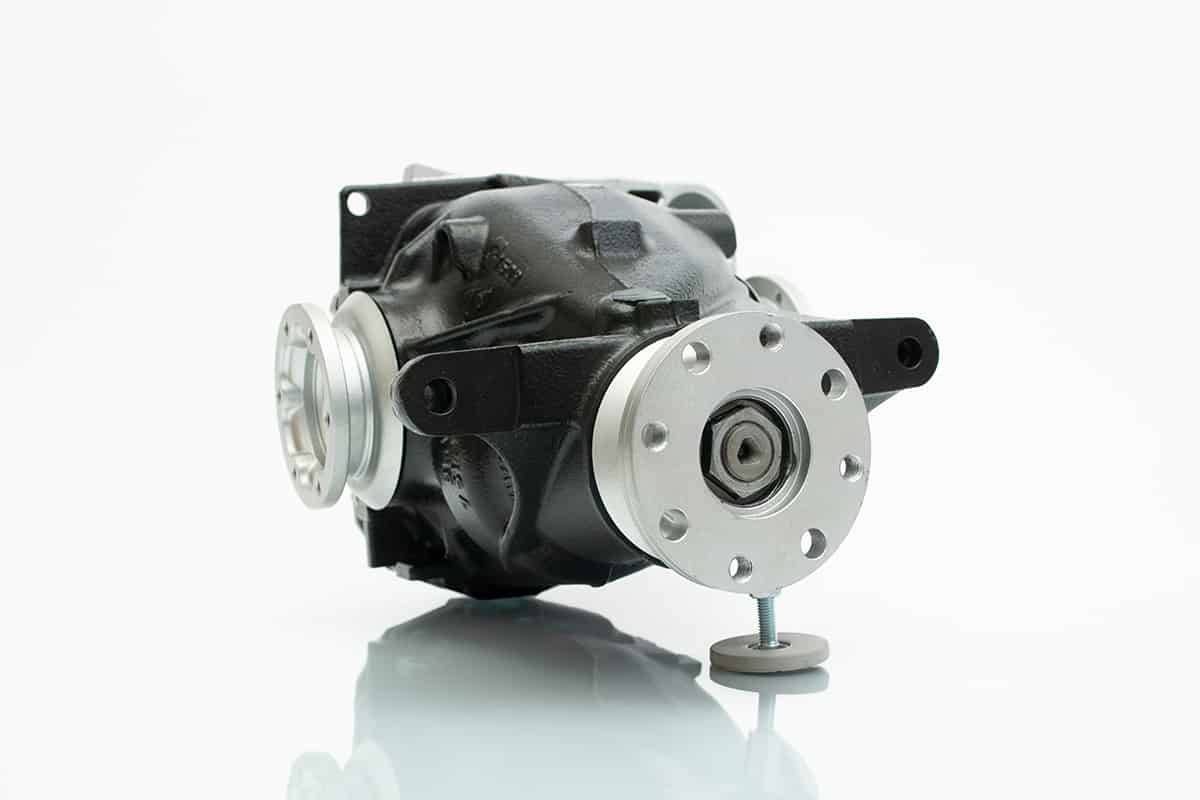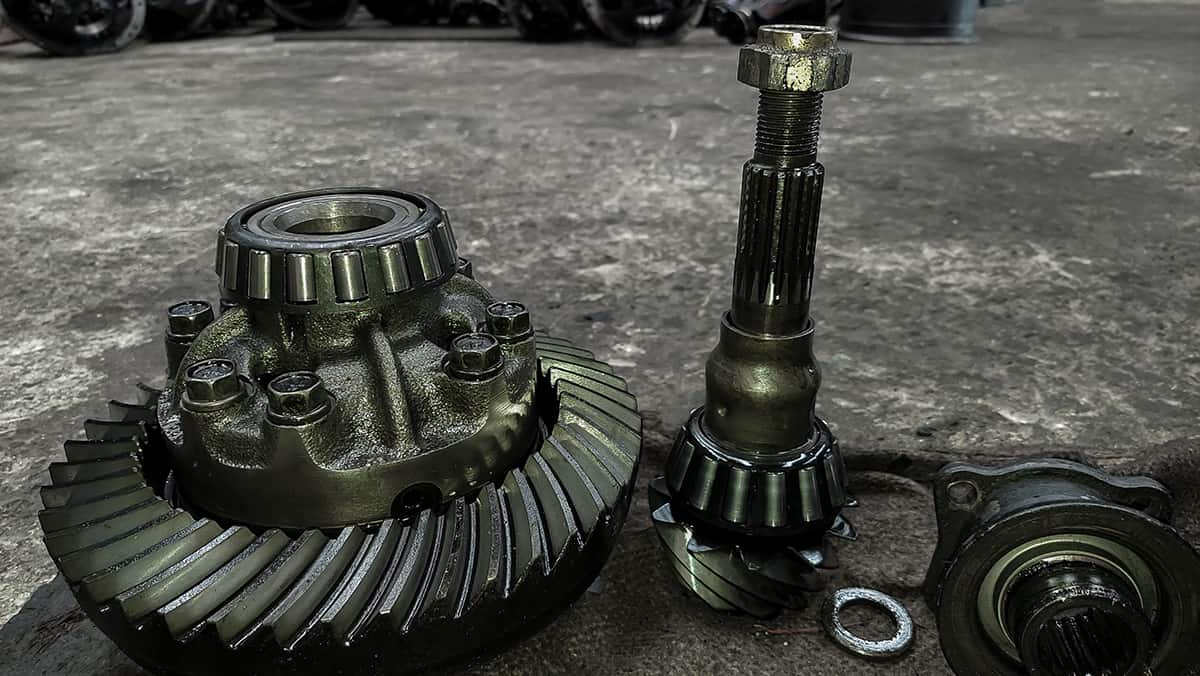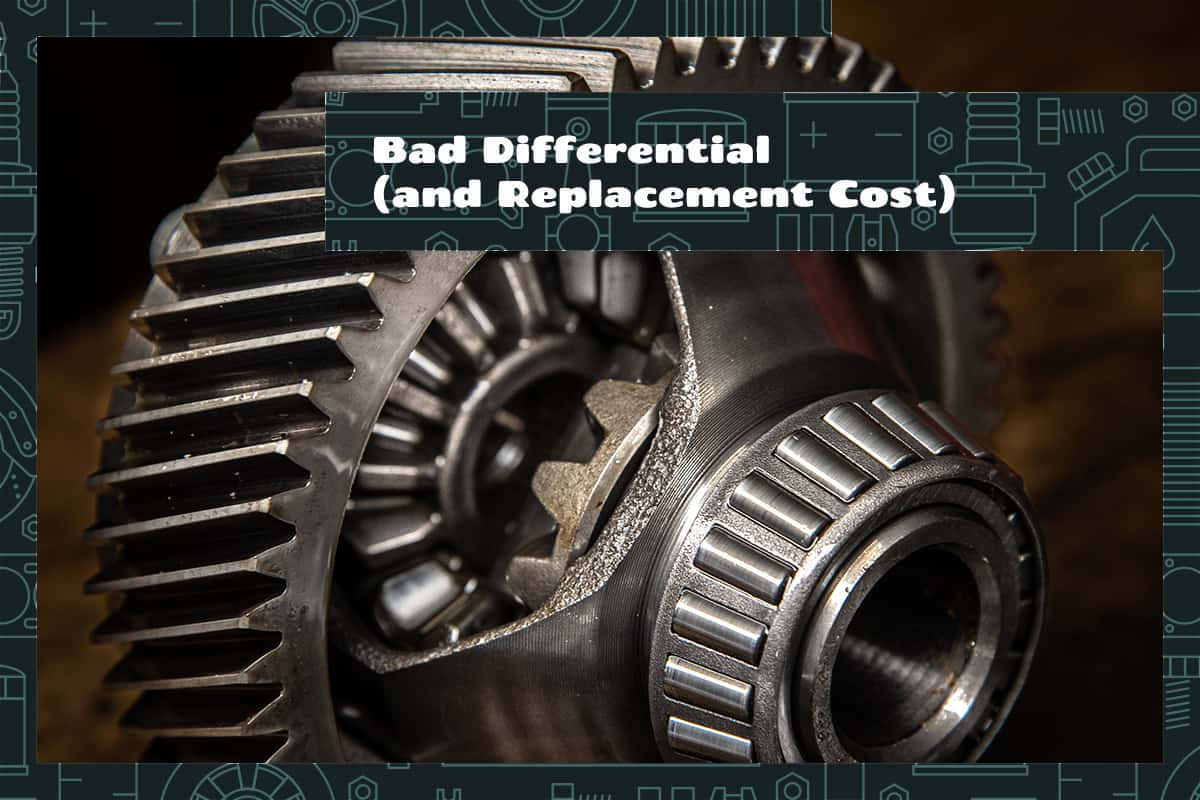A vehicle’s differential allows the wheels to spin at different speeds, which is especially crucial during turns. This small yet complex assembly plays a significant role in ensuring smooth, balanced driving and maintaining the longevity of your car. However, like any other part, it is susceptible to wear and tear, presenting various symptoms when it’s in bad condition.
A bad differential manifests through unusual noises during driving, vibrating sensations, handling issues, and visible fluid leaks. Repair or replacement costs can range widely, from a few hundred to $1,000 or more, depending on the make and model of your vehicle and the extent of the damage.
In this guide, we will dive into the world of differentials, covering the causes and the pivotal decision between repairing and replacing a bad differential.
The Mechanics of Differentials

When a vehicle turns a corner, the wheels on the outside of the turn have to cover a longer path than those on the inside. Consequently, they need to rotate faster. The differential facilitates this, ensuring smooth and efficient turns.
The differential accomplishes this by using a set of gears. As power comes from the engine and transmission, it’s directed to the differential’s input, or pinion, gear. This meshes with the ring gear attached to the differential carrier, which houses a set of smaller, spider gears. As the vehicle goes straight, these spider gears rotate without moving, allowing both wheels to spin at the same speed. When turning, the spider gears pivot, permitting the wheels to rotate at different speeds.
Types of Differentials
The open differential is the most common type. It allows for the differing wheel speeds necessary for turns, but it has a downside: if one wheel loses traction, the open differential will ‘over-send’ power to the slipping wheel, reducing overall drive efficiency.
A limited-slip differential (LSD) works like an open differential under normal conditions but can lock up when a wheel starts to slip. An LSD uses additional mechanical components or viscous fluid to detect slip and redistribute torque, ensuring that some power always goes to the wheel with more grip. This increases performance and control, especially on slippery surfaces or during high-speed maneuvers.
A locking differential takes this a step further. When activated, it locks the axle’s two wheels together, forcing them to rotate at the same speed regardless of traction conditions. This feature is particularly useful in off-road situations where maximum traction is needed.
Differential Fluid
Differential fluid is as vital to the differential as motor oil is to the engine. It lubricates the gears, reducing friction and heat. It also helps protect against wear, prolongs the life of the differential, and ensures smooth and efficient operation.
The fluid can degrade and become contaminated with time, reducing its effectiveness. Regular changes of the differential fluid, as specified in the vehicle’s maintenance schedule, can prevent unnecessary wear and tear, saving you from costly repairs or replacements in the long run.
Identifying a Bad Differential
A differential can develop problems over time. These issues often come with warning signs. Early detection and intervention can prevent more significant issues down the road.
1. Unusual Noises
You may hear whining, howling, or rumbling sounds, especially when making turns or accelerating. This noise often results from worn-out bearings or gears, which create excessive metal-on-metal contact.
2. Differential Vibrations
As bearings or gears wear down, they may cause the driveshaft or axle to vibrate. These vibrations can become more pronounced with acceleration. Excessive vibration is not just uncomfortable—it can also damage other vehicle components.
3. Handling Issues
You might notice problems when turning, such as stiffness or resistance in the steering wheel. Your car might also pull to one side. These symptoms can make driving unsafe, especially at high speeds or in challenging conditions.
4. Differential Fluid Leaks
The differential is a sealed unit filled with oil that lubricates the gears. The seals can wear out and start to leak. This often presents as small patches of dark oil underneath your parked car.
A leak in the differential either front or rear might seem like a minor issue, but it can lead to more serious problems if left unattended. Without adequate lubrication, the differential’s components can wear down faster and potentially fail.
Causes of a Bad Differential

Despite being a hardy component, the differential is prone to malfunctioning. Knowing what causes this can help you figure out how to address the problem.
1. Normal Wear and Tear
The differential is continually working as long as your vehicle is in motion. The gears within it are in constant contact, rotating thousands of times every minute. This results in a slow but inevitable process of wear and tear. The gear teeth can become worn down or damaged, causing poor performance and familiar whining or rumbling noises.
2. Accidents and Physical Damage
Though robust, the differential isn’t immune to physical damage. A significant impact, such as hitting a pothole at high speed or a collision, can damage the differential casing or the internal gears. Such incidents can lead to immediate failure or problems that manifest the longer you drive.
3. Manufacturing Defects
While not common, manufacturing defects can lead to differential problems. Errors during the manufacturing or assembly process can result in components that don’t fit correctly, are misaligned, or have other flaws. These can cause the differential to operate inefficiently, leading to premature wear or failure.
Repair vs. Replacement
Once a differential starts to show signs of trouble, the question becomes whether to repair it or replace it entirely. Both options come with their own pros and cons, and the best choice often depends on the specific situation.
Assessing the Damage
Before deciding between repair and replacement, it’s crucial to determine the extent of the damage. This typically involves a thorough inspection by a professional mechanic. They’ll assess the condition of the differential and identify the underlying issues.
Minor damage, such as a small leak or slightly worn gears, might be fixable through repairs. However, severe issues like significant gear damage, bearing failure, or casing damage often warrant a complete replacement.
Repairing the Differential
Repairing the differential usually involves fixing specific components, like replacing a seal or a set of gears. This can be a cost-effective solution if the damage is minor.
However, repair isn’t always the best long-term solution. If the differential has already experienced substantial wear, it might be just a matter of time before other parts start to fail. Also, if the damage is extensive, repairing the individual components might cost as much as, or even more than, a full replacement.
Replacing the Differential
In some cases, replacing the entire differential is the most effective solution. This is often the case if multiple components are damaged, if there’s significant wear across the whole assembly, or if the differential has suffered a catastrophic failure.
A replacement can offer several advantages. It can effectively resolve all issues in one go, and a new differential often comes with a warranty, providing peace of mind for the future. However, the initial cost can be higher than a repair.
Replacing a worn-out differential can run you several hundreds of dollars to $1,000 and beyond. The cost of replacing a differential can vary based on several factors:
- Vehicle Make and Model: Some vehicles, especially luxury or specialty models, may require more expensive parts or more labor-intensive procedures.
- New vs. Used Parts: A brand-new differential will cost more than a used one. However, used parts may not have a warranty and could have shorter lifespans.
- Labor Costs: Labor rates can vary from one shop to another and also depend on the complexity of the replacement process.







